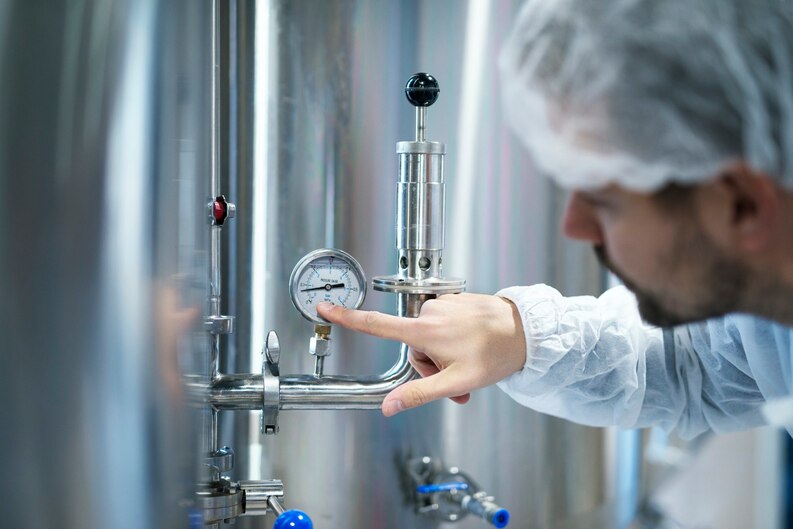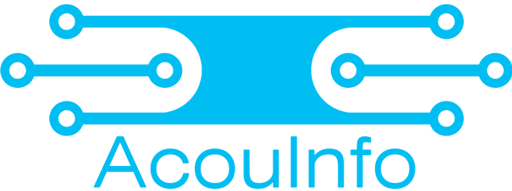
Water Velocity Sensors
Accurately measuring water velocity is essential across a wide range of industries and environmental applications. From monitoring river health to managing municipal water systems and preventing flood damage, understanding how water flows through natural and artificial systems is a cornerstone of modern water resource management. Advances in sensor technology now make it possible to collect detailed, real-time data that informs decisions in agriculture, hydrology, urban planning, environmental science, and infrastructure development. In this article, we’ll explore what velocity sensors are, their key applications, and how cutting-edge technology like AcouInfo’s acoustic tomography system is transforming this space.
What is a Velocity Sensor?
A velocity sensor is a device that measures the speed of movement of a fluid or object. In water systems, these sensors are used to track how fast water is moving through a given point or along a surface or cross-section.
How Do Velocity Sensors Work?
Most water velocity sensors work based on physical principles such as electromagnetic induction, sound wave propagation, or mechanical motion. For example, electromagnetic velocity sensors operate by measuring the voltage generated as water flows through a magnetic field, while acoustic sensors use Doppler shifts in sound waves to determine velocity.
Importance in Hydrology and Engineering
In hydrological applications, velocity sensors provide critical data for river discharge calculations, flood forecasting, sediment transport analysis, and ecological modeling. In engineered systems, such as irrigation channels or stormwater drains, velocity sensors help ensure efficient water distribution and infrastructure safety.
Evolving Technology
While traditional sensors could only measure velocity at a single point, newer systems can profile velocity across entire water columns or cross-sections, offering a completer and more accurate picture. This evolution enables better modeling, prediction, and planning, especially in complex or variable flow environments.
Water Velocity Probe
A water velocity probe is a compact, usually portable instrument used to manually measure the flow speed of water in rivers, streams, or pipes.
Types of Water Velocity Probes
Water velocity probes come in several forms, including electromagnetic, acoustic Doppler, and propeller-based designs. Propeller probes are often used in fieldwork due to their simplicity and low cost. Electromagnetic and acoustic probes, though more expensive, offer higher accuracy and are suitable for turbid or debris-laden waters.
Applications in Fieldwork
Velocity probes are indispensable for hydrologists, civil engineers, and environmental researchers conducting field measurements. They are commonly used in manual gauging stations and research settings, where sensors are placed at different depths or cross-sections to calculate average flow velocity.
Limitations of Traditional Probes
While useful, traditional velocity probes are limited in that they only measure speed at discrete points. They often require operators to be physically present at the site, which can be risky during floods or adverse weather. Furthermore, obtaining comprehensive data from large rivers requires extensive manpower and time.
Water Velocity Flow Meter
A water velocity flow meter measures both the speed of water and the total volumetric flow, making it a fundamental tool in managing water systems.
How Flow Meters Calculate Volume
Flow meters determine flow rate by combining velocity data with cross-sectional area measurements. When water depth and channel geometry are known, even in open channels, area-velocity meters can compute total discharge with high accuracy.
Different Types of Flow Meters
There are several types of flow meters used in water systems:
- Transit-time ultrasonic flow meters use sound pulses sent upstream and downstream. The difference in travel time between these signals is used to calculate water velocity.
- Magnetic flow meters apply Faraday’s Law, measuring voltage induced as conductive water passes through a magnetic field.
- Doppler ultrasonic meters detect the shift in sound wave frequency caused by particles or bubbles in the water.
Market Growth and Demand
According to Allied Market Research, the global flow meter market was worth approximately CAD 9.49 billion in 2018 and is expected to grow to CAD 15.5 billion by 2026, representing a CAGR of 6.3%. This expansion is fueled by growing awareness of water scarcity, stricter environmental regulations, and technological advancements in flow measurement.
Fluid Velocity Sensor
The term fluid velocity sensor refers to devices used to measure the speed of fluid primarily water in motion. These are essential for both scientific and practical applications, including ecosystem health monitoring, industrial processes, flood control, and hydropower generation.
Expanding Beyond Point-Based Measurement
Most conventional sensors, whether probes or small-scale meters, capture velocity data at one or several fixed points. However, rivers and open channels are dynamic systems where velocity can vary widely across depth and width. This makes traditional tools insufficient for accurate real-time monitoring.
The Role of Acoustic Tomography
Acoustic tomography addresses this limitation by using synchronized sound signals transmitted across the entire width of a river. By analyzing the time, it takes for these sound waves to traverse the water body, average velocity across the whole cross-section can be calculated. This technique ensures that variations in depth, width, and current are all accounted for in a single, unified measurement.
AcouInfo’s Innovation in Fluid Velocity Measurement
AcouInfo has developed a groundbreaking acoustic tomography device that sets new standards for water velocity sensing. Unlike traditional sensors, the AcouInfo system is designed to deliver complete, accurate, and instant measurements without requiring bulky infrastructure or risky field operations.
Full Cross-Section Velocity Mapping
AcouInfo’s device uses dual transducers placed on opposite sides of a river to send and receive acoustic signals. This enables full-section velocity profiling, capturing every nuance of flow dynamic.
No Infrastructure or Human Presence Needed
There is no need for bridges, boats, or robotic instruments. The device operates safely from fixed installations, reducing operational costs and increasing user safety especially during high-flow events or floods.
Adaptability to Extreme Conditions
The device works in rivers with depths ranging from 30 cm to 90 meters, and its robust design ensures continuous operation in any weather condition, including flood scenarios and freezing temperatures.
Remote Monitoring with Cloud Integration
AcouInfo’s product connects to the internet via Wi-Fi and Bluetooth, transmitting data to secure cloud servers. Users can access, analyze, and visualize real-time data remotely, which is ideal for government agencies, researchers, and consultants.
Cost-Effective and Scalable
With a competitive unit price of 1,900 CAD, and a production cost around 450 CAD, the AcouInfo device offers high ROI. It is particularly attractive for mass deployment across large water systems such as the 8,500+ rivers and 2 million lakes in Canada alone.
Advancing Toward Market-Ready Deployment
Currently rated at Technology Readiness Level (TRL) 7, the product has a tested MVP and is poised for real-world use in Canada. The company plans to reach TRL 9 soon after launching its North American operations.
Conclusion
The science and technology of measuring water velocity have come a long way from simple mechanical probes to sophisticated, full-channel sensing systems. Velocity sensors are now vital instruments in our collective effort to understand and manage one of Earth’s most precious resources: water. As climate change intensifies the need for accurate and timely water data, the role of reliable and advanced measurement systems becomes even more crucial.
With innovative solutions like AcouInfo’s fluid velocity sensor, water monitoring is entering a new era. Offering real-time, high-precision, and full-scale velocity data without the logistical and operational challenges of older systems, AcouInfo is not just meeting industry needs it’s redefining them. Whether for government monitoring programs, environmental stewardship, or infrastructure management, these next-generation sensors are a smart investment in water sustainability and public safety.
